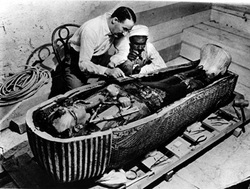

Ancient Egyptian Tomb of Sacred Animals Including Lion Cub Mummies Found.Ancient Egyptian mummies had gold tongues to talk to god of the underworld.The only chop marks that could be seen all seem to be related to the decapitation of the already dried crocodile mummies and not to the cutting of the necks of living or freshly killed animals. No marks associated with the killing of the crocodiles could be identified. The team were not able to find any evidence pertaining to how the animals were killed or where they may have been caught. suchus), which in the case of the latter is no longer found in Egypt. niloticus) and the West African crocodile ( C. The team even determined that the bones seem to represent two different crocodile species-the Nile crocodile ( C. The experts also measured the specimen's bones, estimating that they came from animals ranging in length from 5.9 feet to 11.5 feet. In the case of the five isolated skulls, the heads were removed when the crocodiles were already. "During the process of mummification, damage occurred to some of the crocodiles, while others were well preserved. "The bodies were then wrapped in linen and mats of palm leaves and brought to the tomb where they were deposited."

"It is assumed that the animals were first laid on the surface or buried in a sandy environment that allowed the bodies to dry out naturally," De Cupere said. The team found that there was no evidence of the special preparation techniques seen at other sites-namely, no indications that the intestines were removed and no signs of the use of bitumen. De Cupere et al., 2023, PLOS ONE, CC-BY 4.0 Five of the crocodile mummies found at Qubbat al-Hawā were more or less complete, while others consisted of the heads alone. The manner in which the specimens were prepared is unlike those found at any other ancient Egyptian site to date, the researchers concluded.Ī view from from above of one of the complete crocodile specimens. The team's examinations of the remains yielded insights into the mummification of these "exceptional" specimens. "In the case of the crocodiles of Qubbat al-Hawā, the absence of linen bandages and resin allowed us to carry out directly a detailed study of the preserved tissues and bones in all individuals," De Cupere said. Many of the crocodile mummies stored in museums are covered with large amounts of bitumen and/or wrapped in linen bandages and can only be studied using special techniques such as radiographs and CT scans. "The undisturbed tomb of Qubbat al-Hawā is therefore unique, presenting a collection of crocodile mummies which can easily be studied." "Crocodiles from more recent excavations of funerary contexts are quite rare and consist mainly of scattered remains from disturbed contexts," De Cupere said. But they are rarely examined thoroughly-which was one of the main aims behind the latest research. These specimens were collected in large numbers, especially in the late 19th and early 20th centuries. Many museums worldwide have Egyptian animal mummies in their collections and among them are numerous crocodiles.
#Were any egyptian tombs found completely undisturbed skin#
"Dignitaries of the region were buried here in the tombs cut out of the rocks."ĭuring excavations conducted in an undisturbed tomb, the University of Jaén team uncovered a collection of crocodile remains in 2019, consisting of five more or less complete bodies and five heads in varying states of preservation and completeness, some with skin still attached to them.įor the PLOS ONE study, the authors examined these crocodile mummies in an attempt to learn more about them. "It is one of the most densely occupied cemeteries of ancient Egypt," De Cupere said. Evidence suggests the necropolis was in use from around 2,500 years ago to the Roman and Byzantine period (30 B.C.–A.D. The site-whose name translates as "Dome of the Wind"-consists of a mound composed of horizontal sandstone layers, creating terraces. Since 2008, a team from the University of Jaén in Spain has been conducting fieldwork in rock tombs at the archaeological site of Qubbat al-Hawā, which once served as the resting place for ancient nobles and priests. This god was associated with fertility and often depicted as a crocodile, or a human with a crocodile's head. "Killing an animal was not a problem if its mummification the human world with the divine sphere."Ĭrocodiles were sacrificed to act as intermediaries between humans and the ancient Egyptian deity Sobek. "The animal mummies were used as votive offerings to the worshipped gods, or were considered to be physical manifestations of the gods," Bea De Cupere, an author of the study at the Royal Belgian Institute of Natural Sciences told Newsweek. A study has found that the crocodiles were preserved in a unique way. This picture shows mummified crocodiles found during excavations at Qubbat al-Hawā, Egypt.


 0 kommentar(er)
0 kommentar(er)
